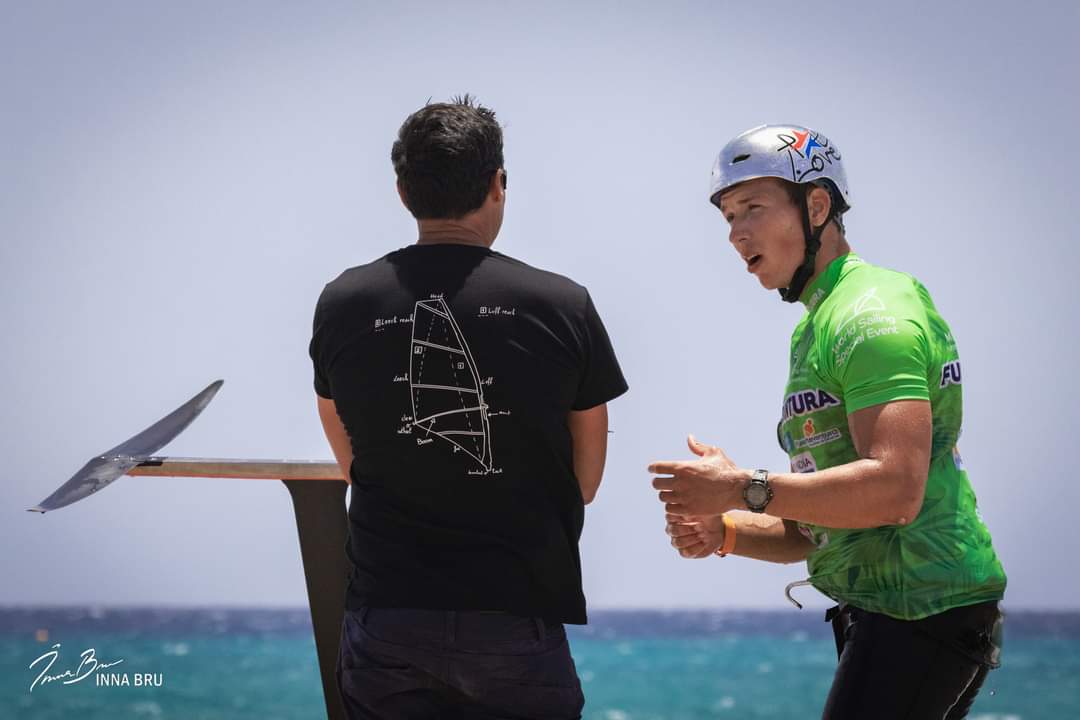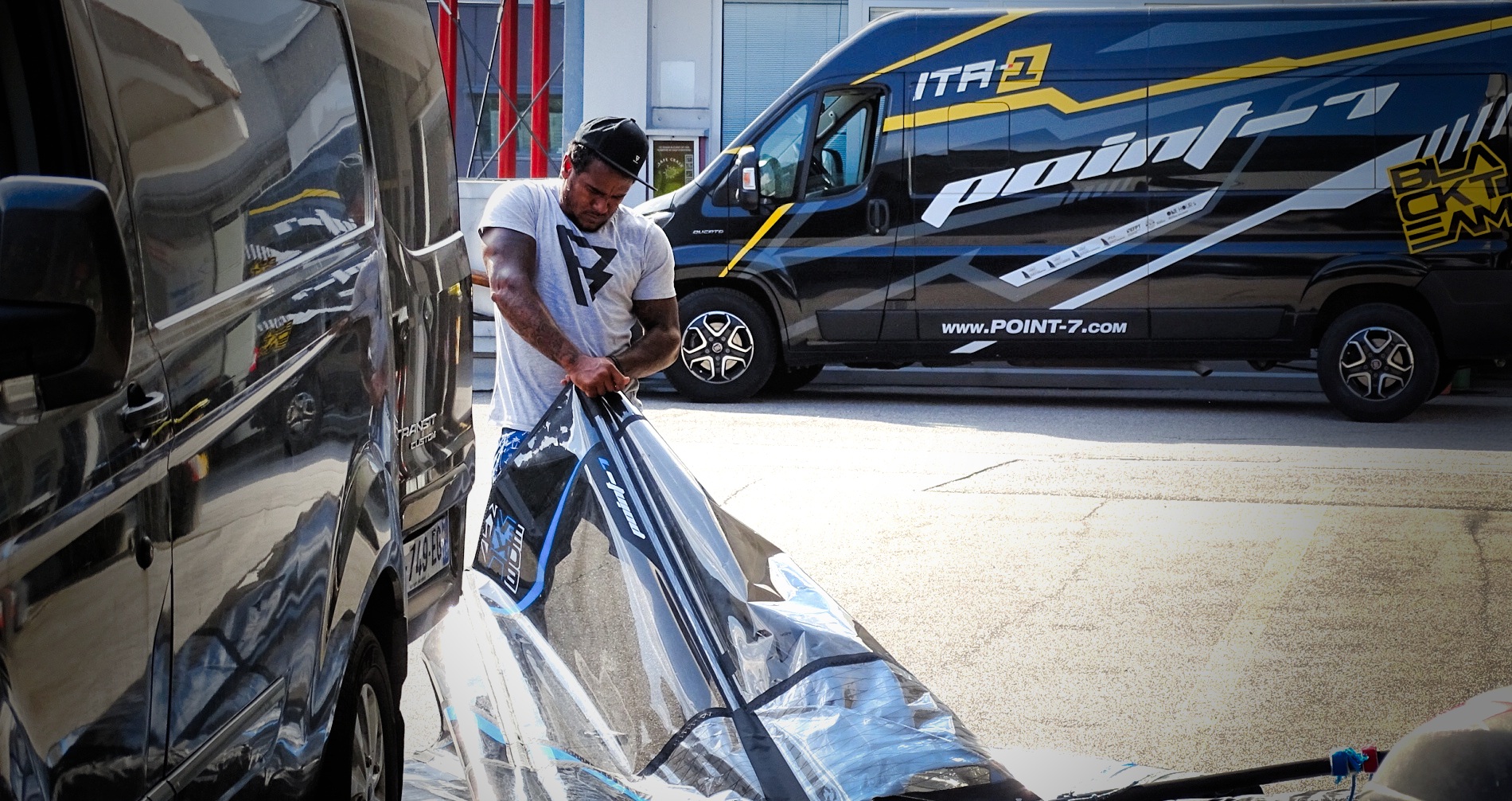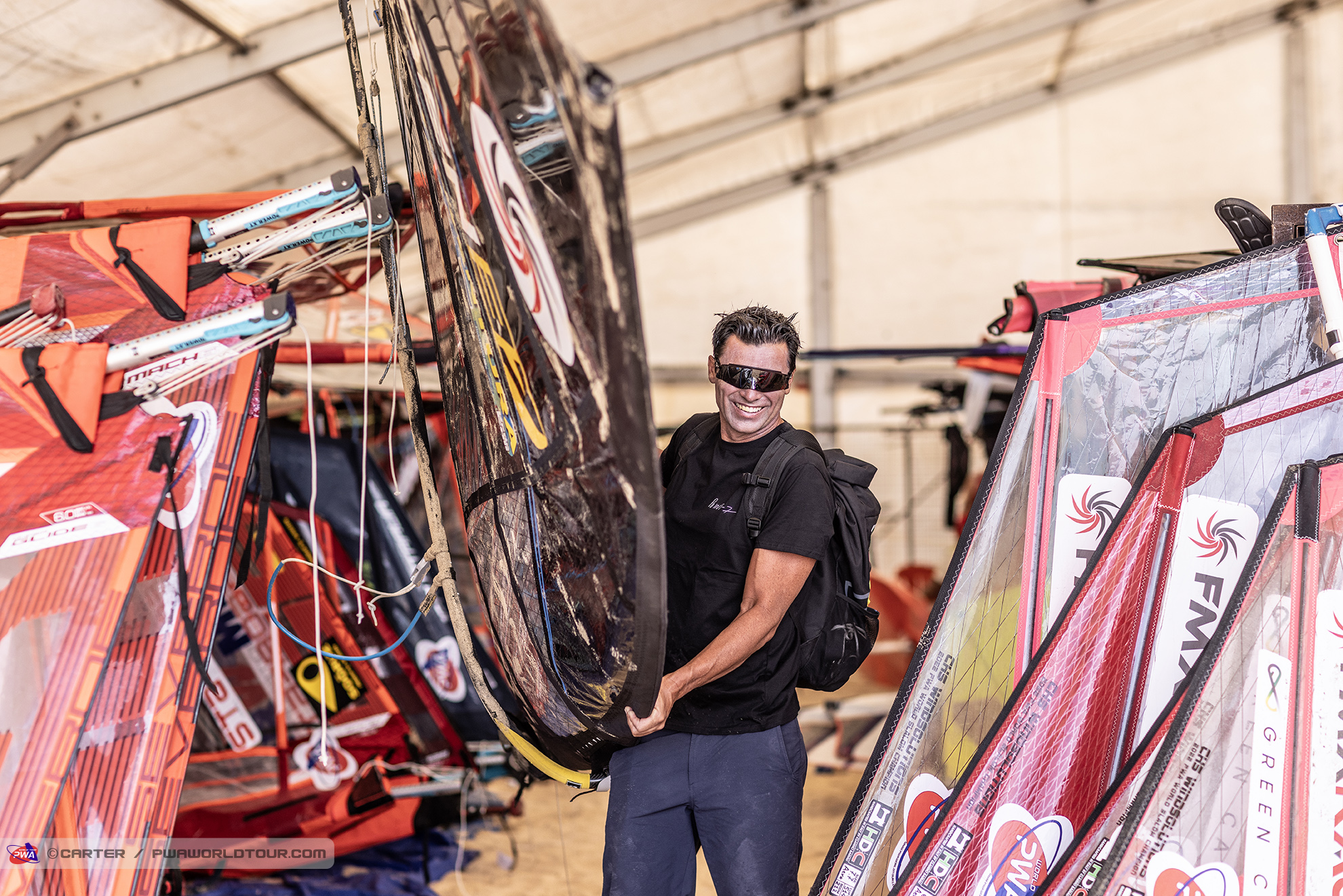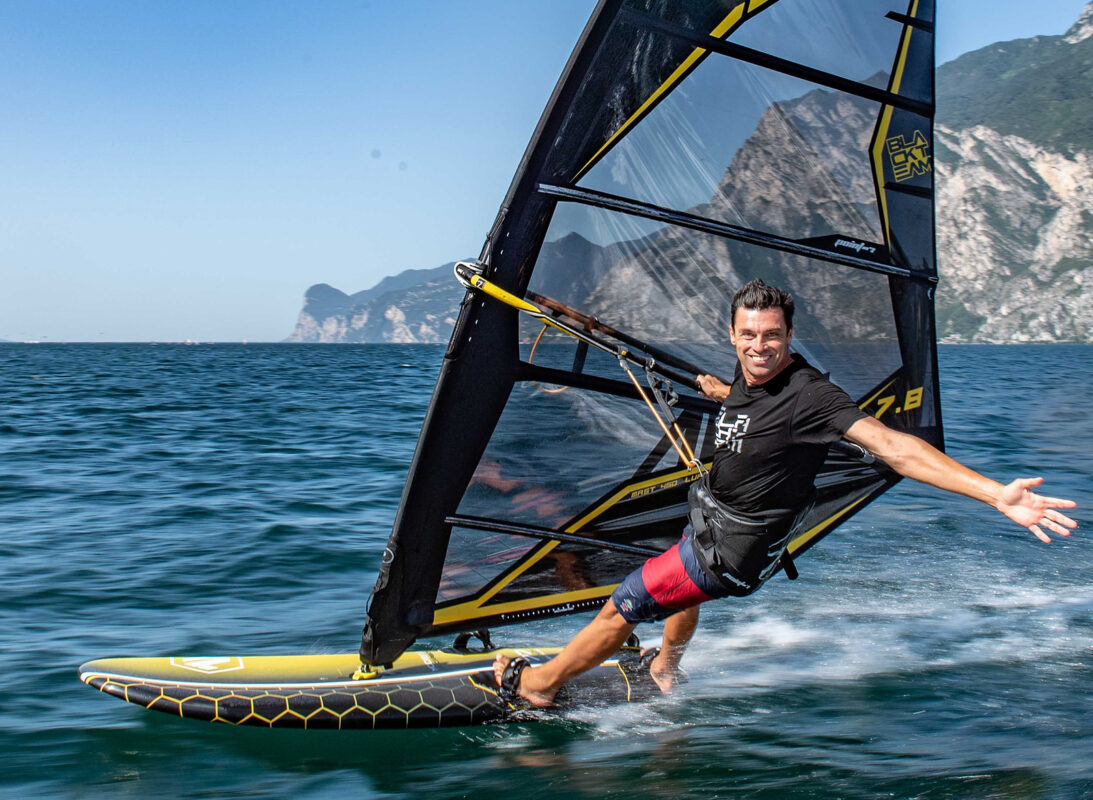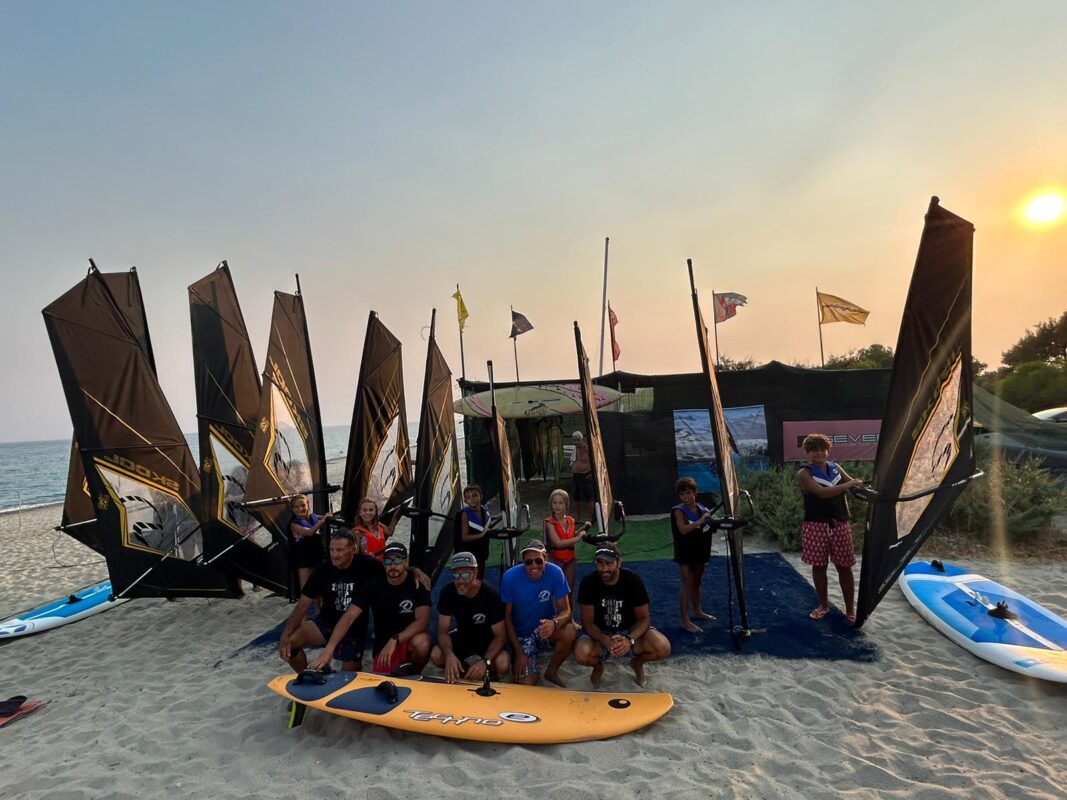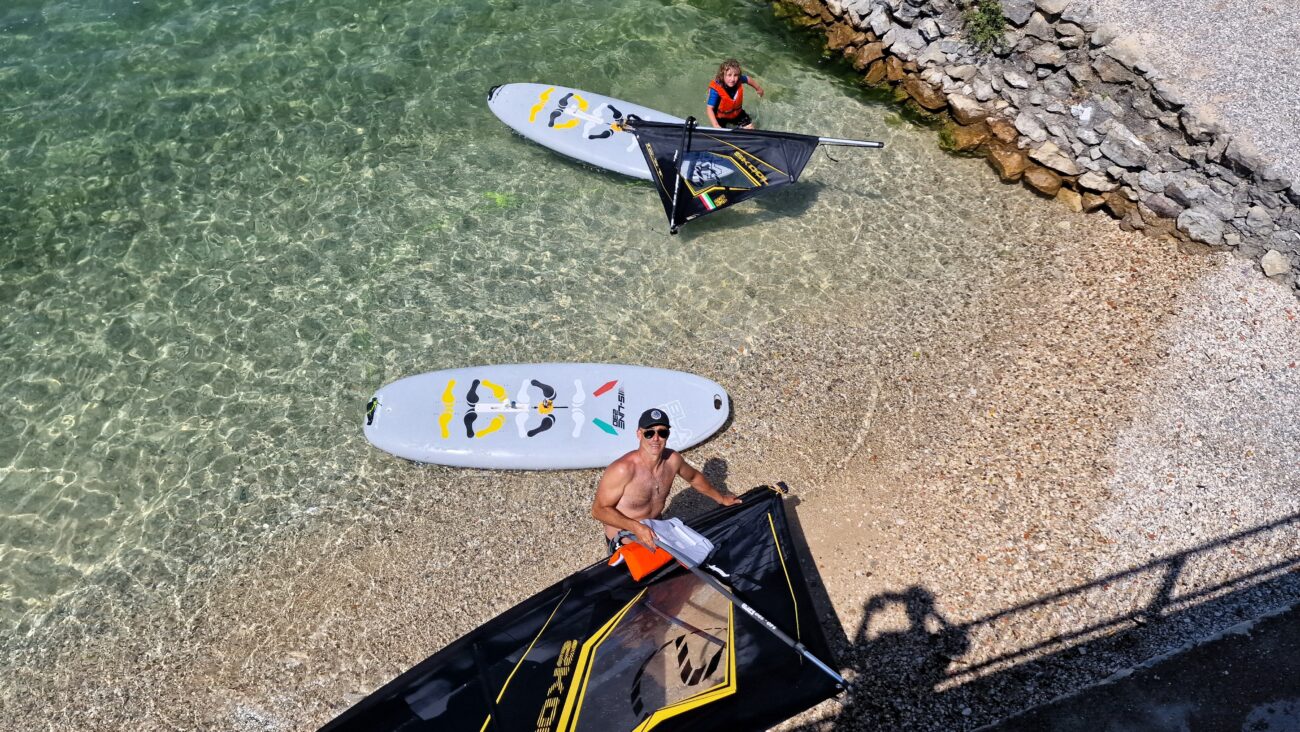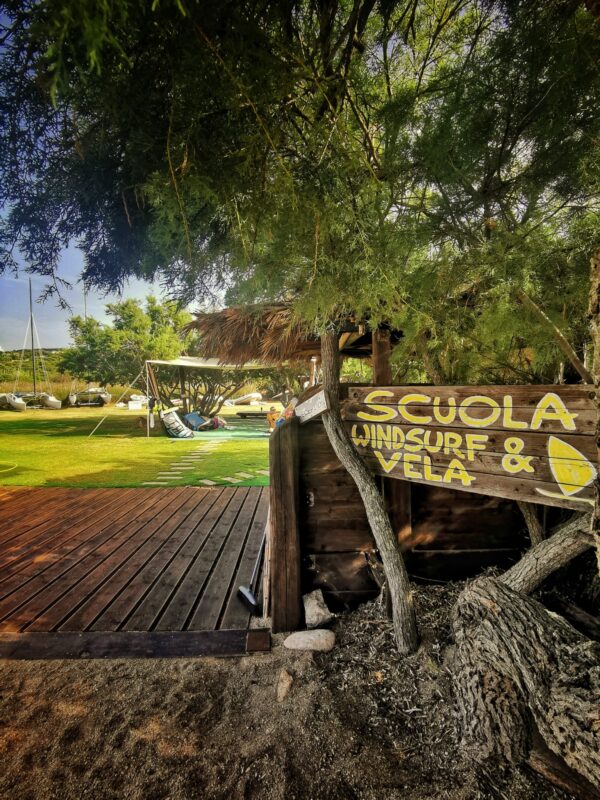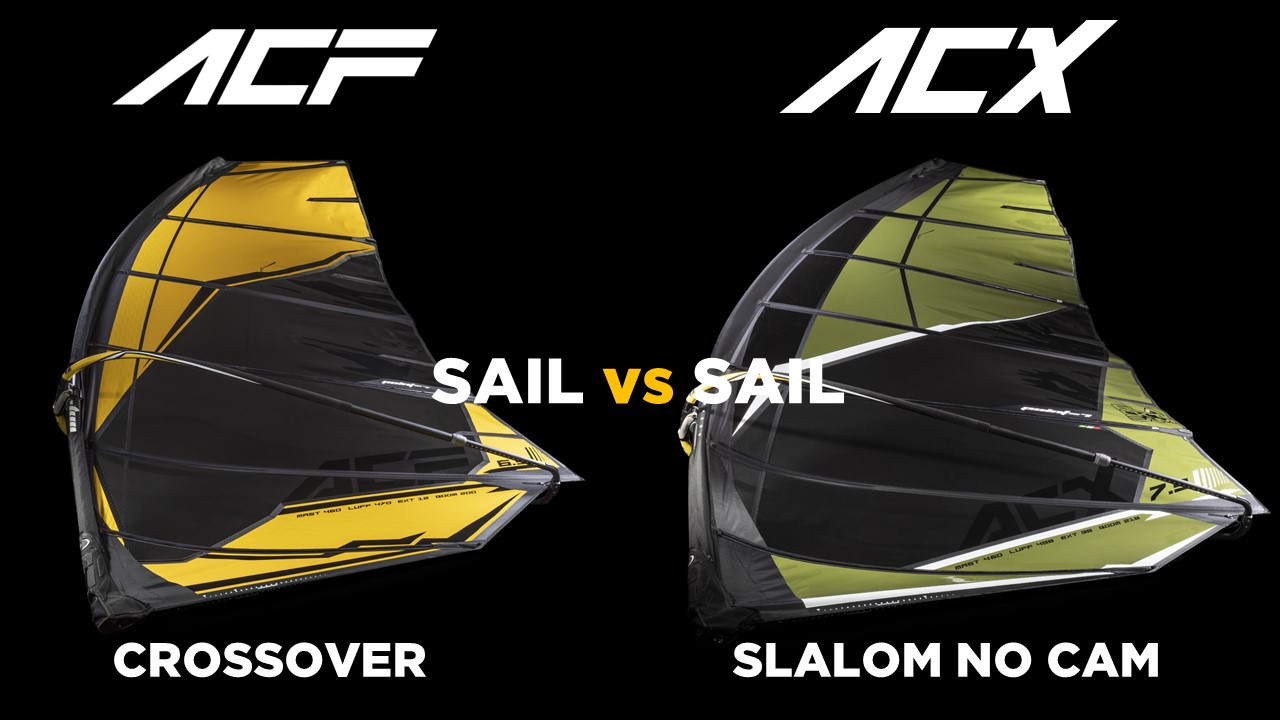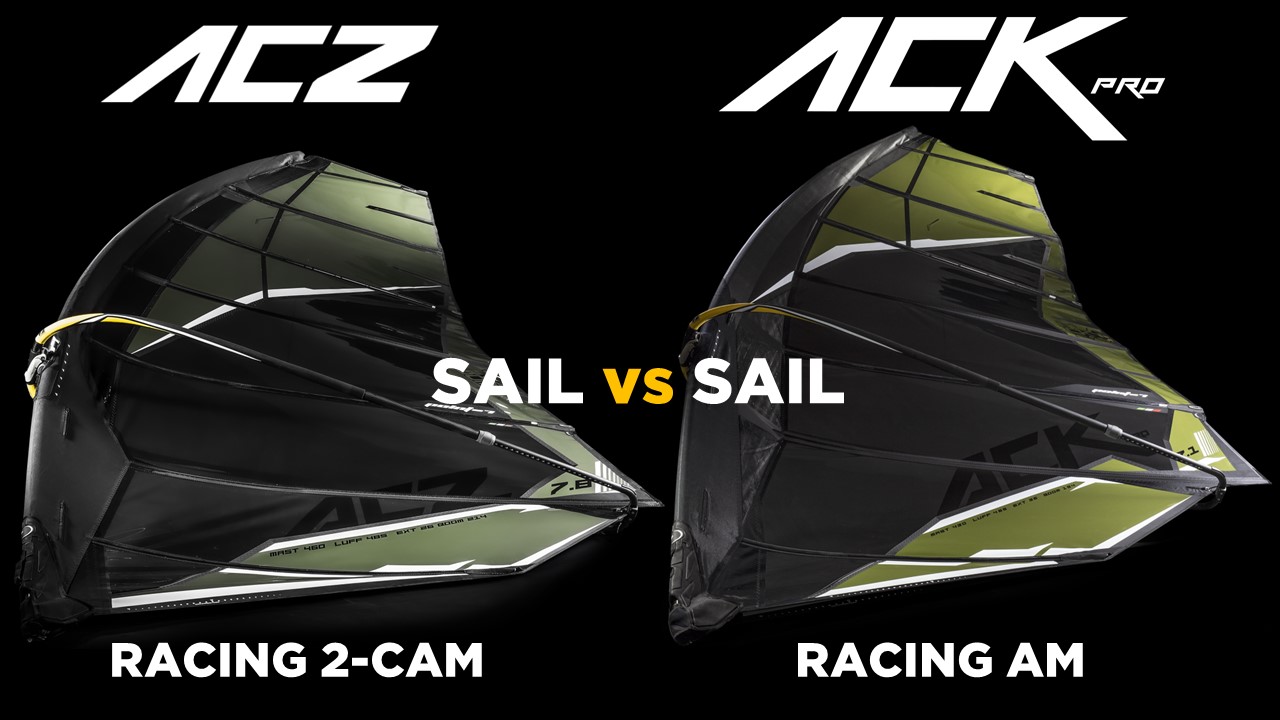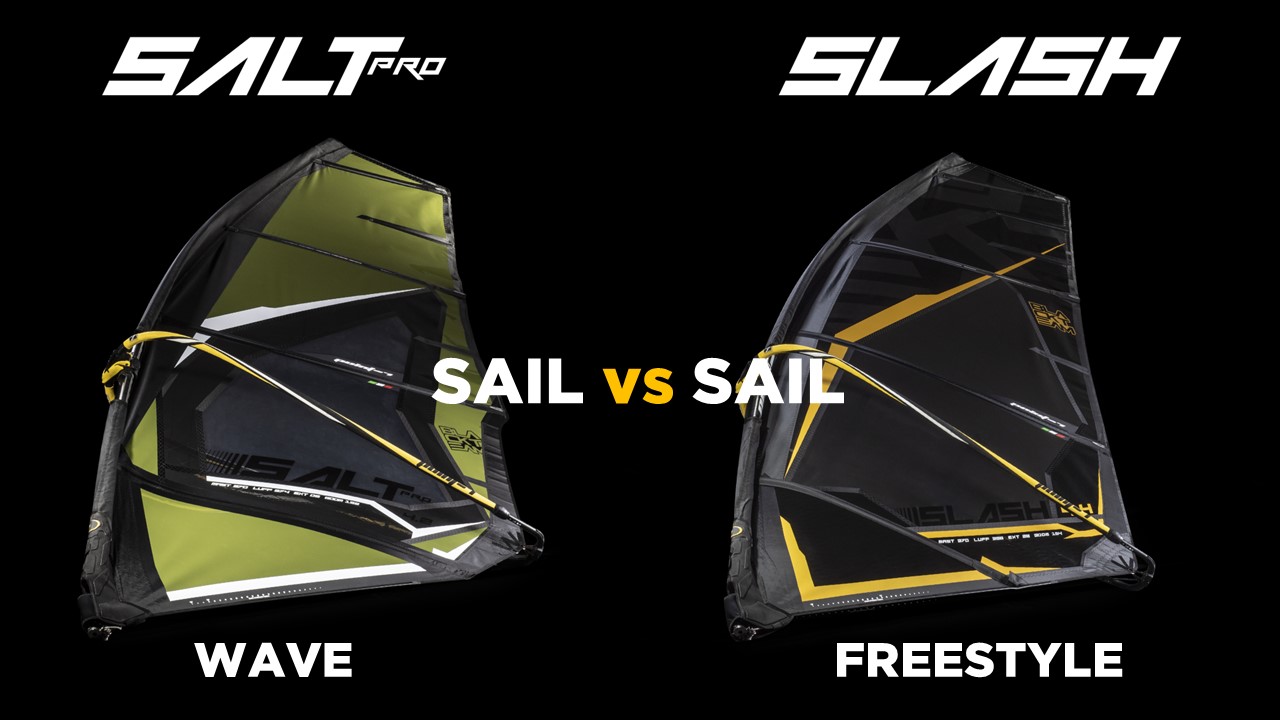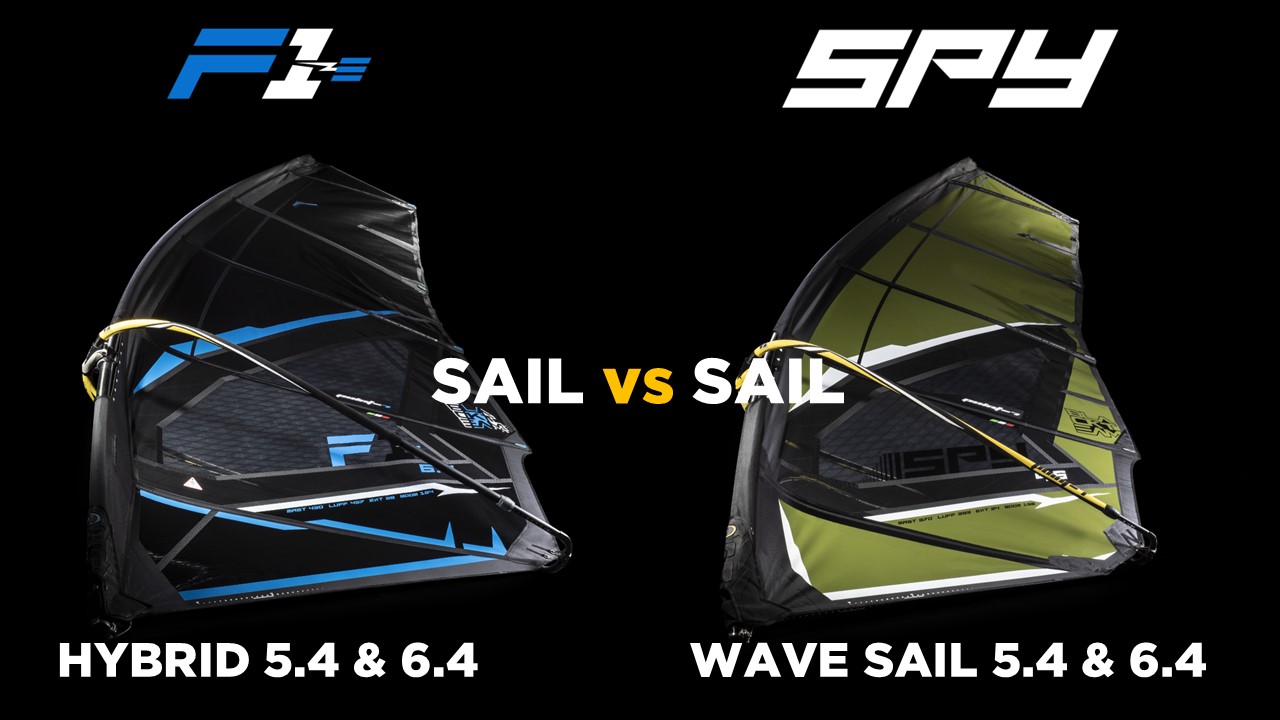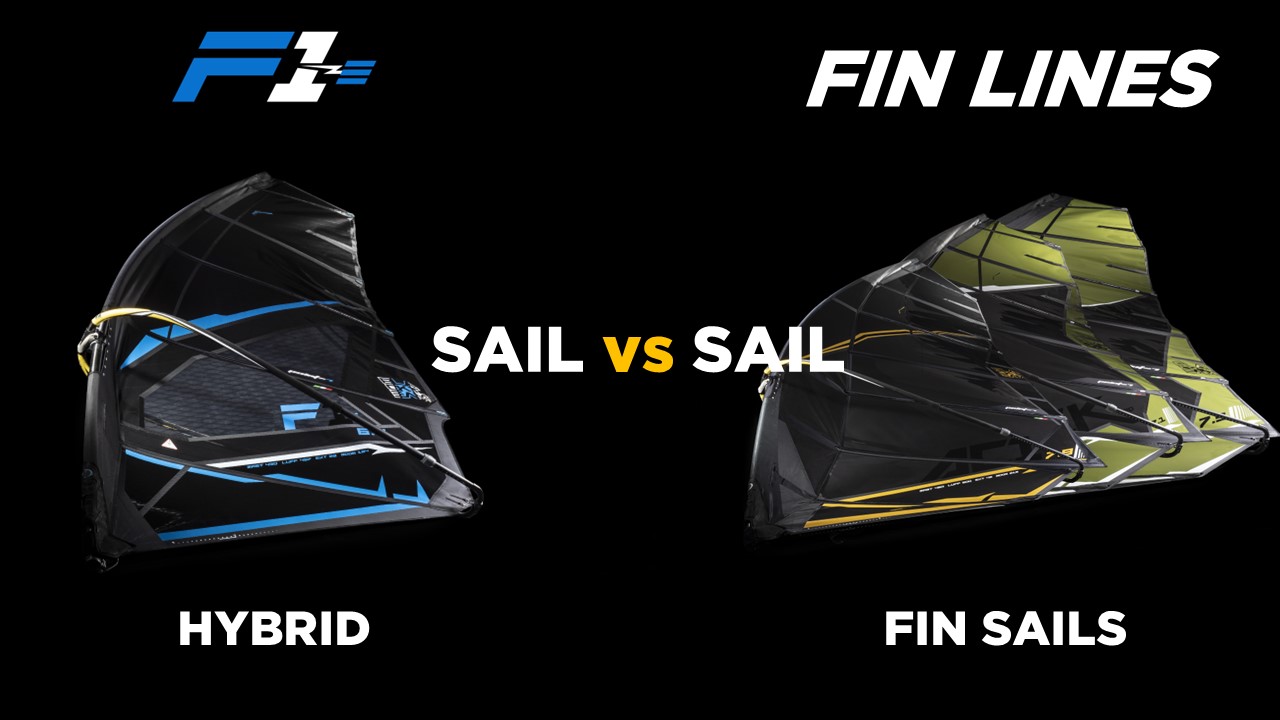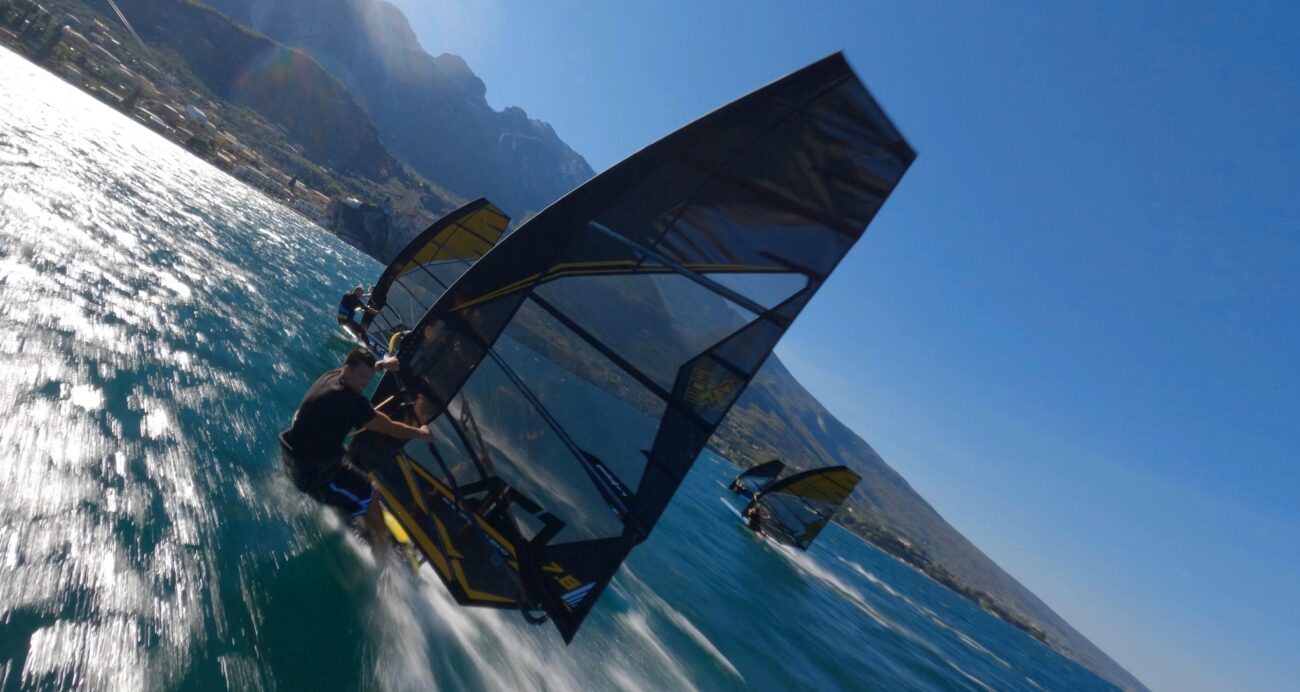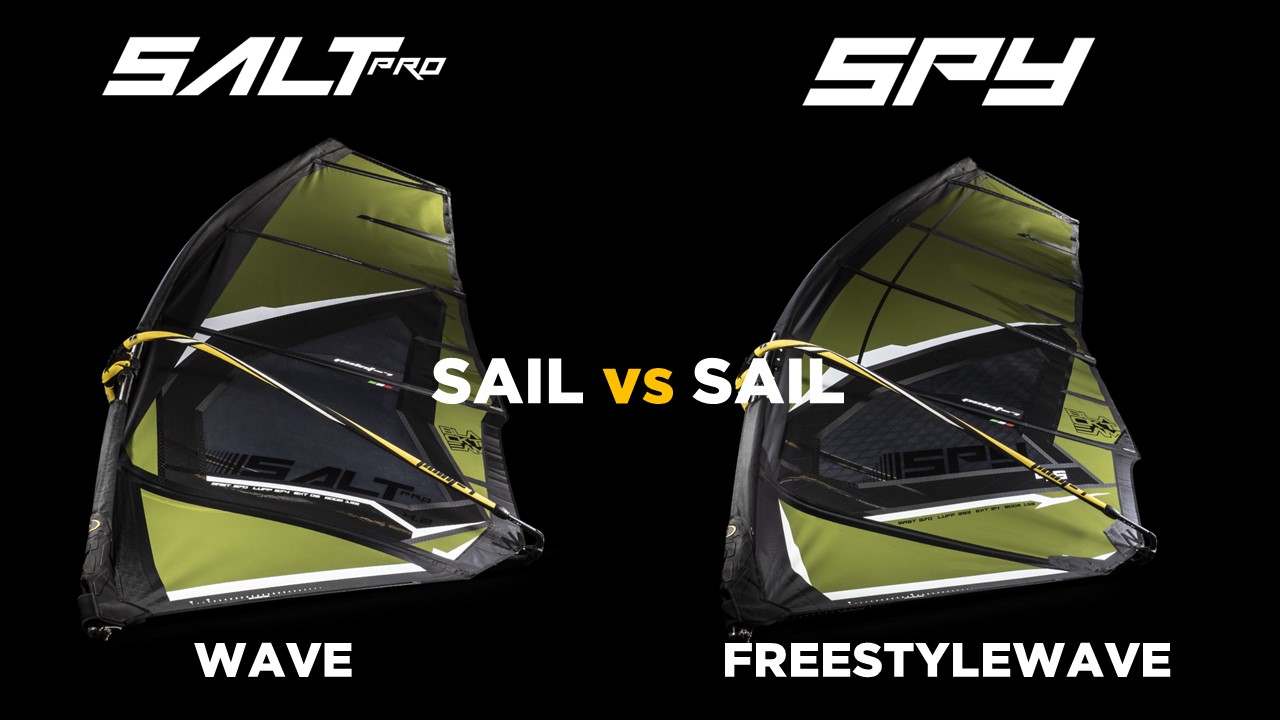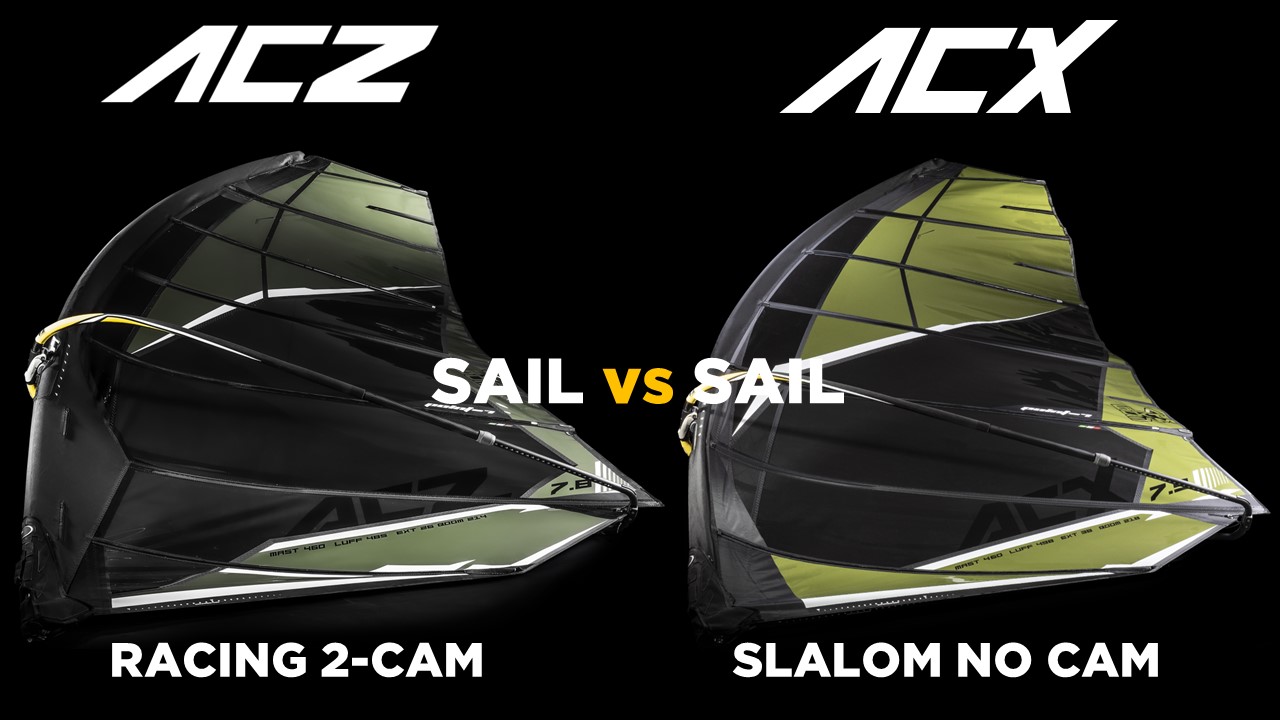Point-7 head honcho, Andrea Cucchi, dives into the cam or no-cam debate as he talks about developing his AC sail-lines for flat-water fin sailing. And in case you didn’t know, AC stands for the name of the chief of development and owner of POINT-7, Andrea Cucchi. And this is why, he tells us, when you need advice on tuning and trim, you will get an answer directly from the boss, as there is no model or size he has not tested or tuned himself during the development of each of these lines!
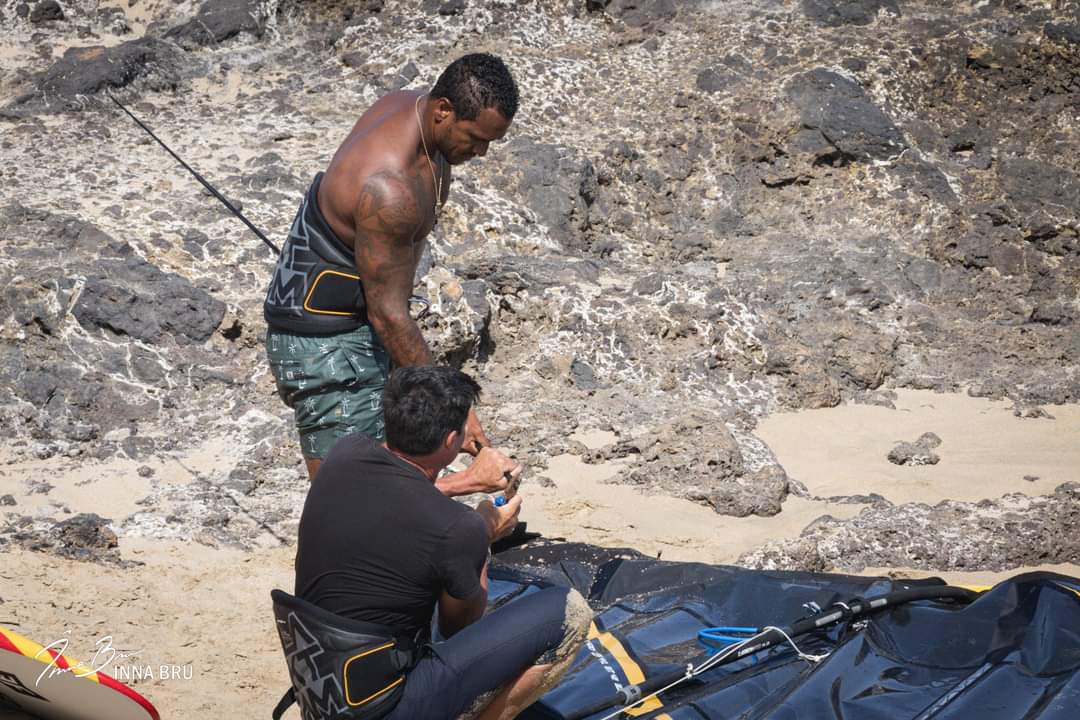
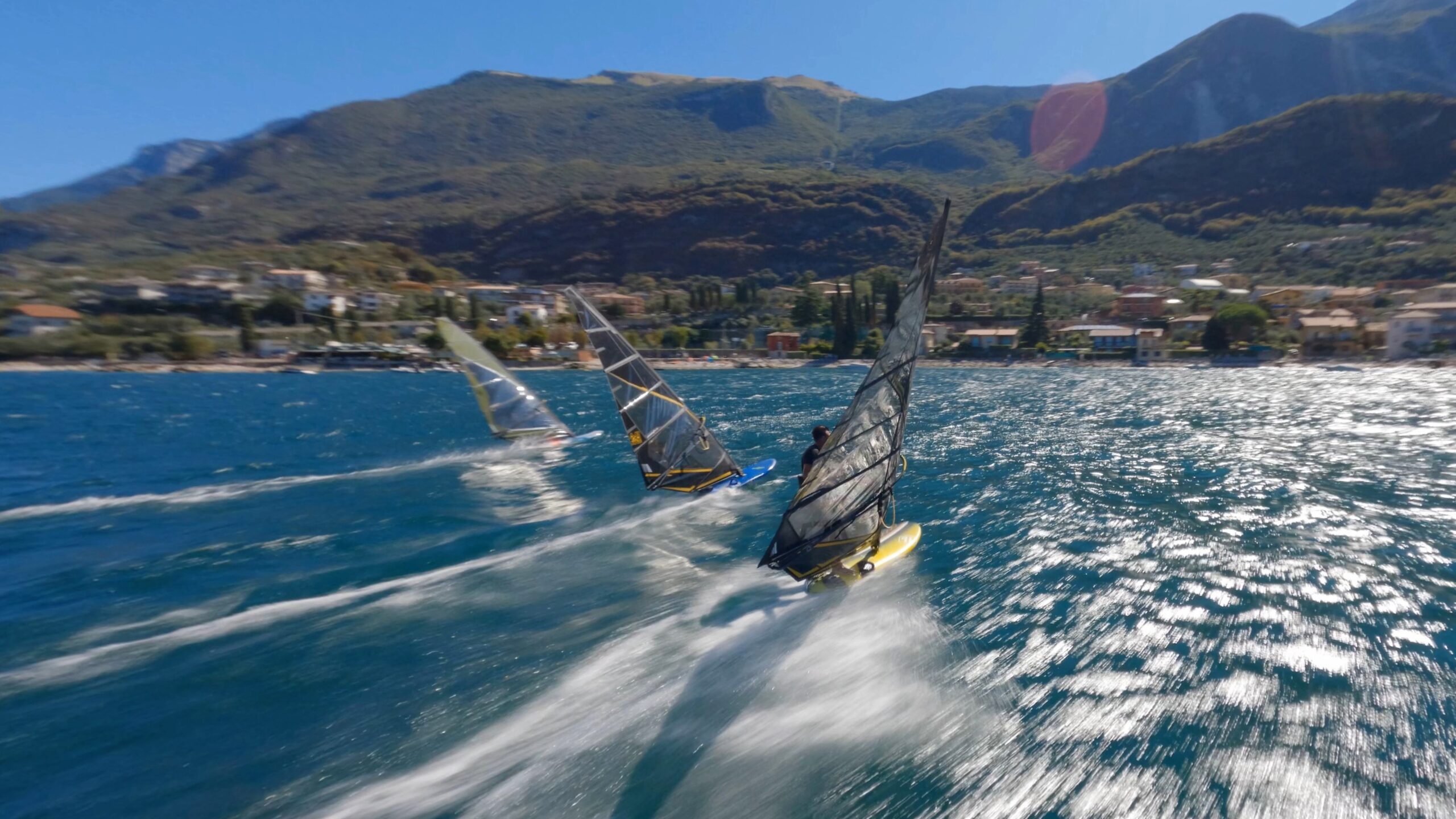
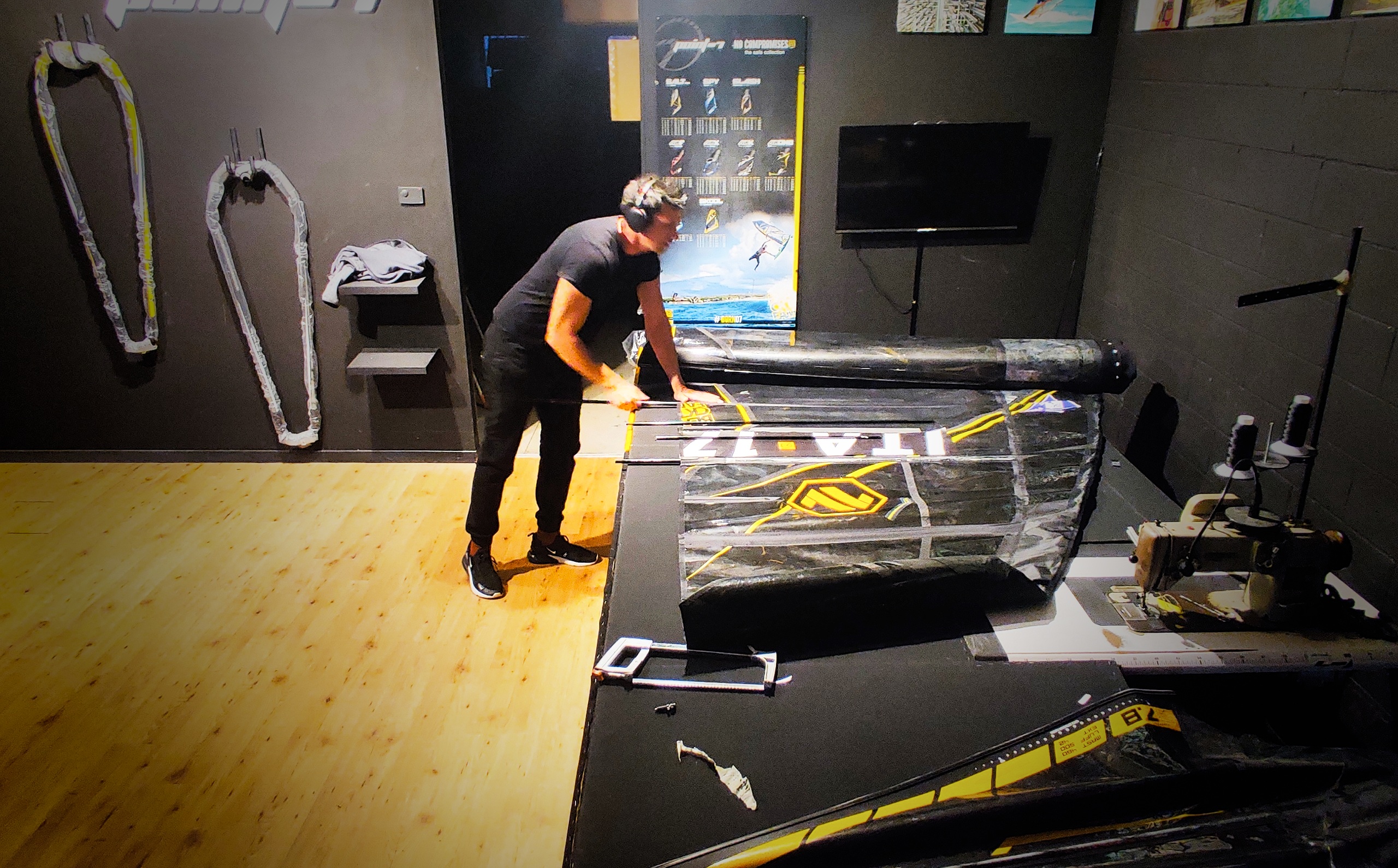
Andrea Cucchi – “I had the chance to work in development for many different brands during my career as a professional windsurfer. I felt it was the best way to feel connected with the brands and work on products that I had a passion for. And I always had more passion for sails, as I like the way you feel the power going directly to your arms, and I also always found it interesting to see how the rig responded so differently on the water than what you could imagine on land. I always realized during my years of professional windsurfing that being comfortable with gear was the best way to be able to win a race, as you could focus on the racing, and not on taking care of how to control the gear to be fast. The saying, ‘power is nothing without control’, is very true. Another key point to being fast was to have power to accelerate, and power to push on the gear, but again, it had to be a power that it is easy to control. So bringing the most possible power, and having it under control has been always our target in Point-7 when developing our sails.
“POWER IS NOTHING WITHOUT CONTROL.”
POWER
Power in sails needs to be placed in the right place. You can have sails with power in the front, centre or in the back. It depends how you want to develop the sail for your clients. For us it is important to deliver fast, easy and powerful sails. For this we prefer our sails to give a central pull, so that the power of the sail is exactly balanced between the front and back arm, directing the power to the centre of your body and therefore straight to the harness, reducing stress to your arms. If more back hand is needed to push more on the fin to get more power to lift and rail the board, you can obtain it easily by letting off 2 cm on the outhaul. And if the sail starts to be extremely overpowered, it can be pulled 2 cm on the outhaul, bringing the power back to a more centered position. 72 SEPTEMBER 2023
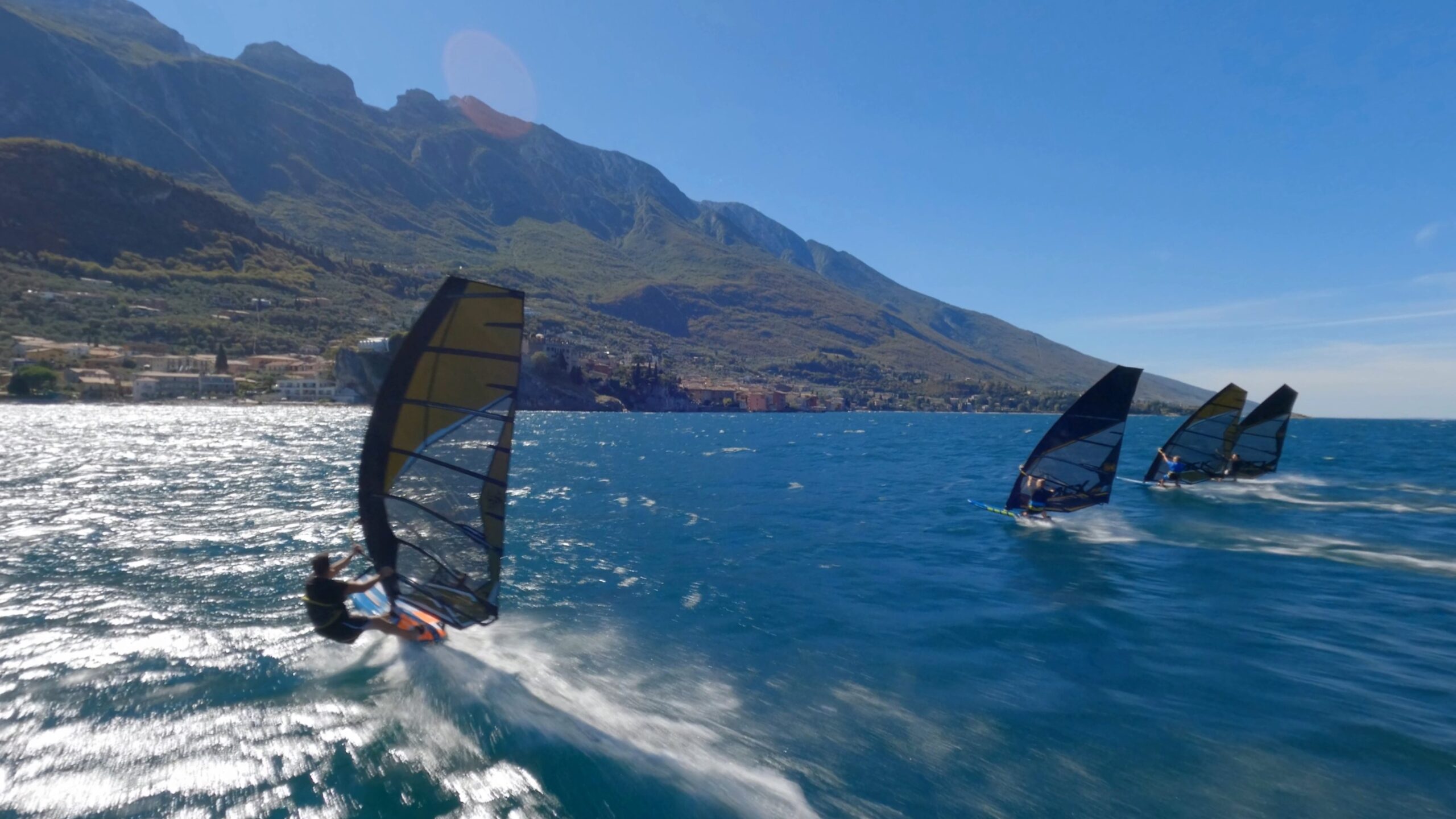
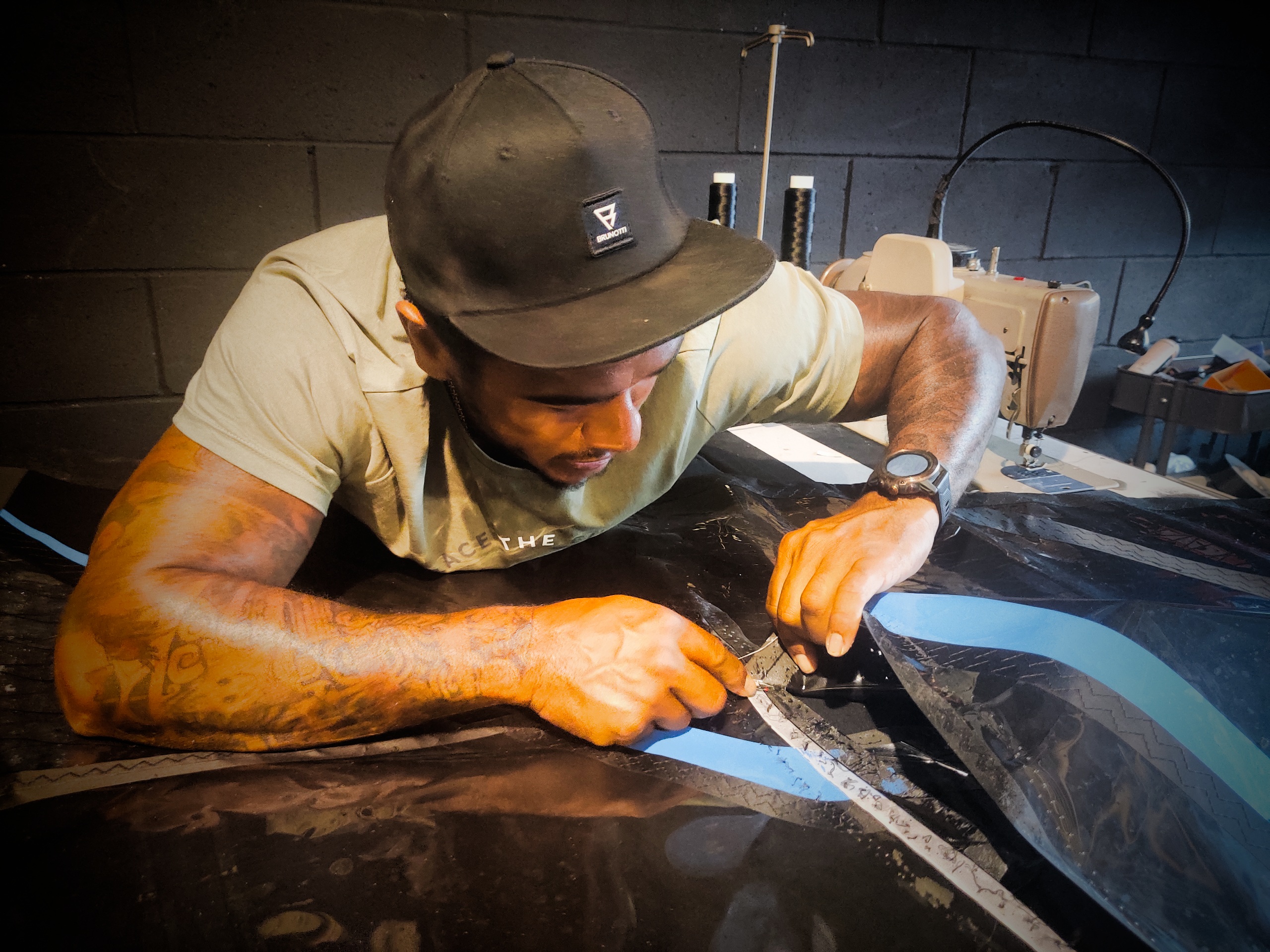
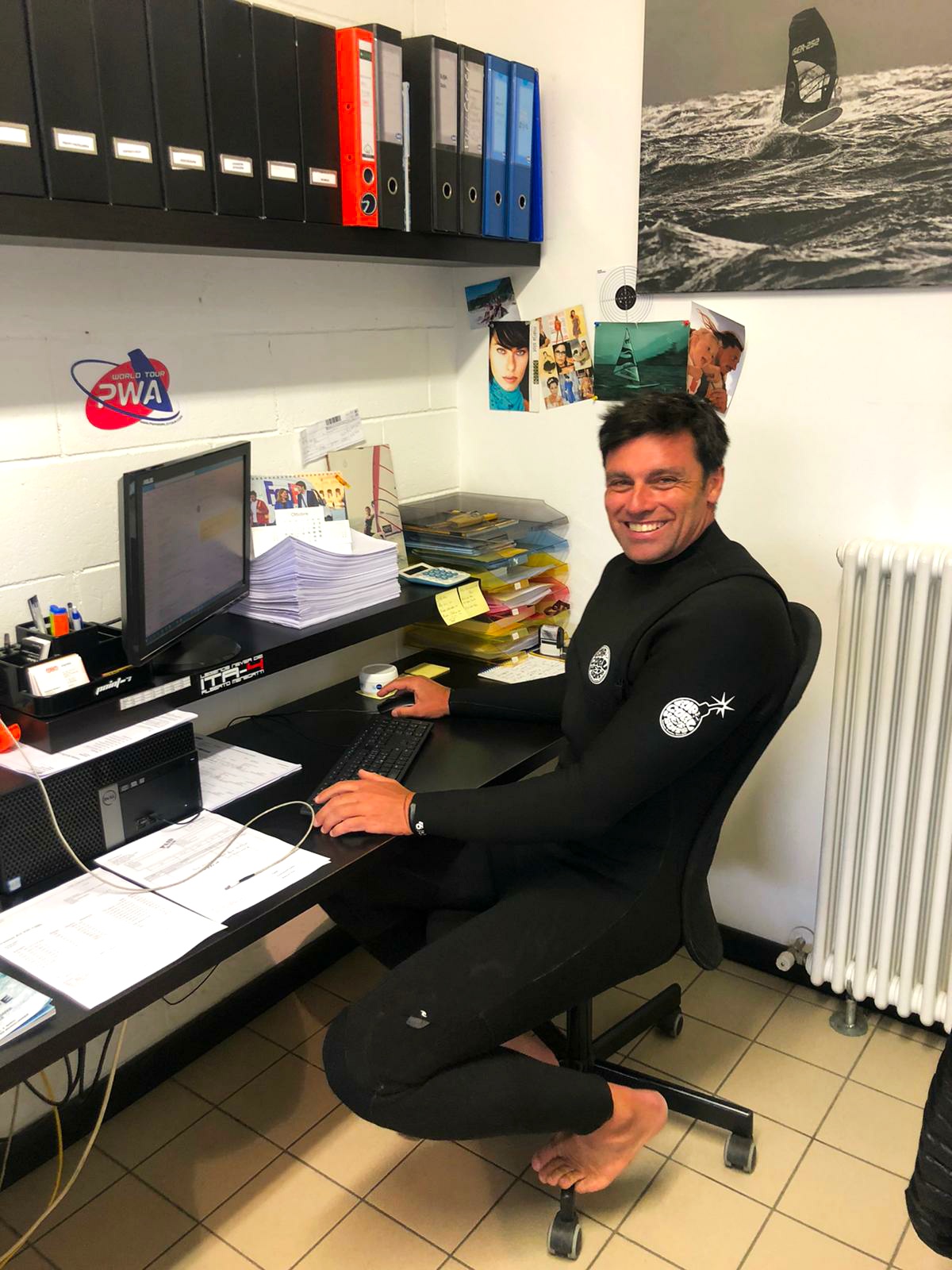
FAST
To be fast on slalom sails, your stance needs to be steady – meaning that you have to close the gap and your body should not move. The more you use the harness to push on the board, the more speed you will have, but if you keep getting lifted and body moves, the slower the average speed will be. To make sure this does not happen at Point-7, all our slalom sails have an automatic leech system. That is the reason why we also offer only one eyelet position on the clew. That is the place it needs to be. This means that it is important to find your outhaul setting to adjust the initial power of the sail according to your needs, but once this is done, if the wind increases or decreases, the sail leech will open or close from the first batten to the top batten. The top batten creating a winglet effect to help the mast bend and be reactive, the bottom batten giving the most power, but all of the battens, including the bottom batten when it gets super windy, will auto adjust in order to create more power in light winds, and decrease power to accelerate in stronger winds. To have this work there has been 15 years of development on the AC-1. It is our racing sail that has won both IFCA and PWA tours. Each single section of the sail has been re-worked non-stop to get to an optimal performance and to have the easiest to use racing sail available. We are all convinced that pro riders look for tough performance to win, but it’s completely the opposite. They have to be overpowered to win, and when you are that powered, if the comfort, stability and balance of the sail is missing, the board will become impossible to keep steady and control over rough waters.
DEVELOPMENT
On the other hand when developing recreational slalom sails with 2 to 3 cams, or no cams, we look for earlier planing sails, lighter sails, easier rotation, easy to waterstart, and less battens. Isn’t this exactly the same as what the pro riders look for? Yes it is! It became clearer then, that a race sail was getting closer and closer to the real market needs and in a straight line more comfortable and easy to use. At that point it made no sense to keep developing all sail lines independently. It was all about taking the race sail, ripping off the wide race sleeve and using a narrower 3-cam mast sleeve, as well as a 2-cam mast sleeve that has the cams under the boom and no cam over the boom, and the no-cam mast sleeve which has exactly the same sleeve as a wave sail. Once changing the mast sleeve on the body of a race sail is done, the tensions and leech need to be re-worked. It’s not as automatic as it sounds, but that is the rough concept. The different mast sleeve sizes, affect not only the handling of the sail in terms of gybing, but also extra cams give a harder rotation, and as the sleeve is wider it gets full of water and takes more effort to uphaul and waterstart, or can have a complicated rigging procedure. Nowadays though, if your sail is well trimmed, the cams rotate that you can hardly feel them. And with a mast sleeve full of water, it is more a question of using the right technique to make it easy to uphaul and waterstart. Rigging a cam sail is an extra step, as cams need to be inserted, but again this is just a technique to be learned and it takes almost less time than inserting the mast into a nocam mast sleeve, which is narrow and takes longer than a wide-cam sleeve.
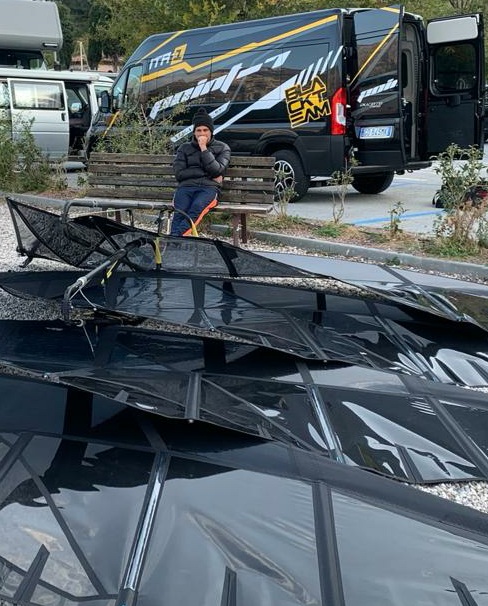
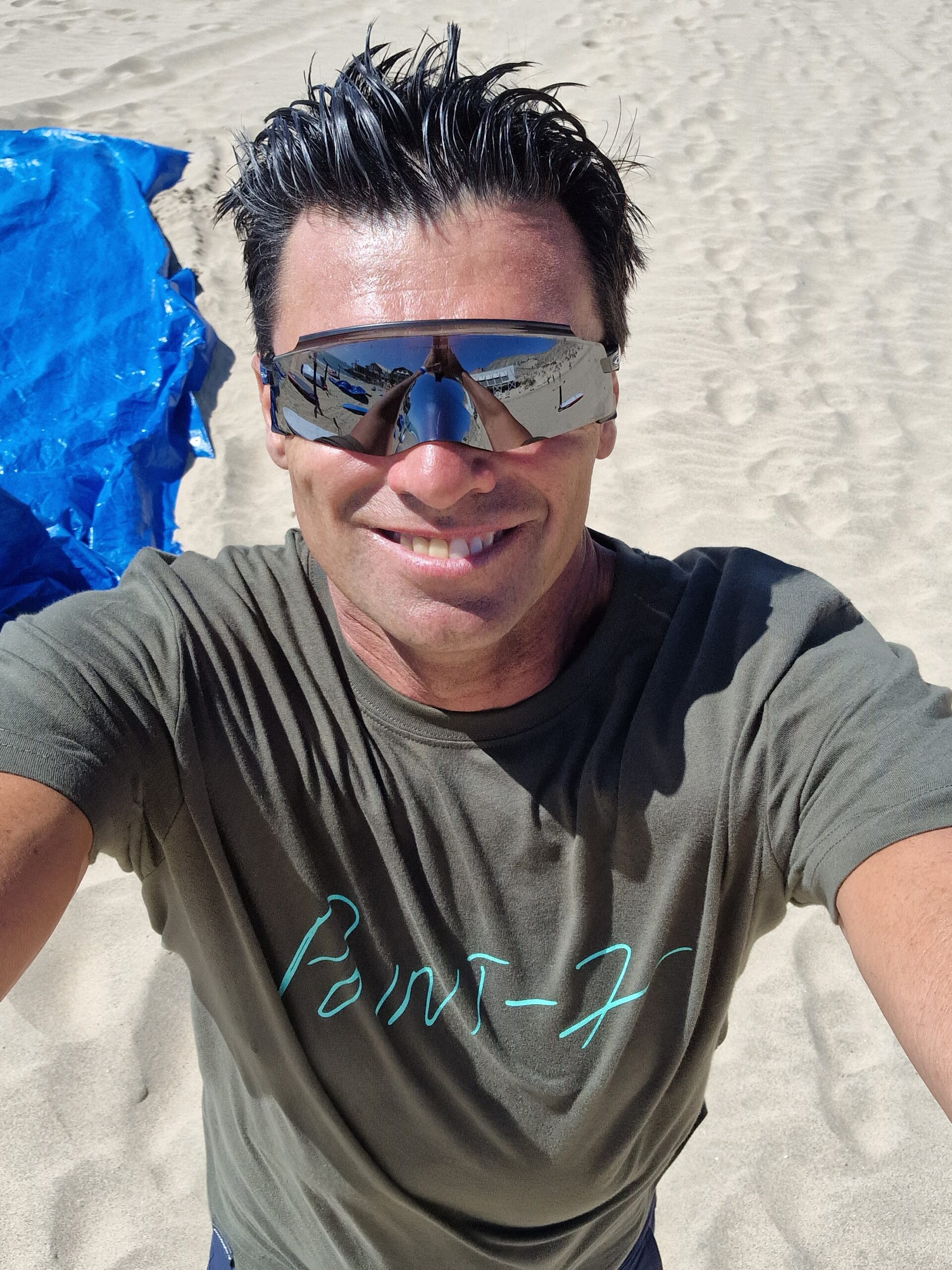
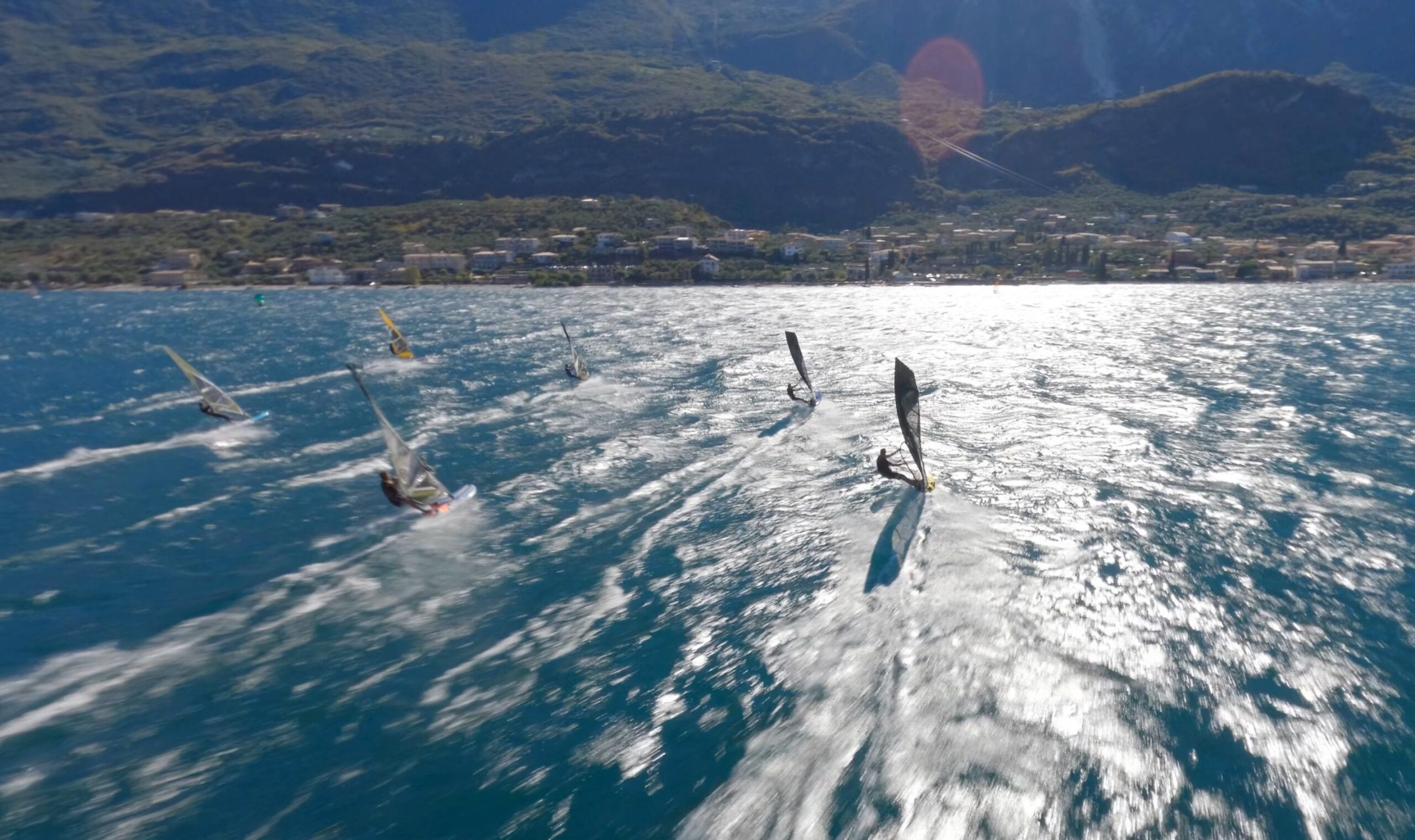
DIFFERENCE
Even if these are all important facts that might still influence the choice to buy a more cammed racing sail, against a no-cam or less cam, the biggest difference is the power while sailing. Generally the more cams there are, the wider the luff sleeve is, and the wide sleeve automatically gives more power to the sail. What does this power do? This power gives a brutal acceleration, which gives a huge advantage when pumping to get on the plane, and also in the gybes to accelerate to top speed. It also helps to keep pushing on full downwind courses or in lulls, increasing the average speed on a slalom course. This brutal power needs to be contrasted with the personal power of the rider. If the rider is not fit, or is not having the right technique, the sail power will win against him, and will not allow
him to keep a steady stance for a long time or to take advantage of the extreme performance. This surplus of un-usable power is what then gets mistaken with weight. For example, if you jump from an AC-1 pro racing sail to a AC-K, which has just 20% less mast sleeve width, and the rest being exactly the same, you will be surprised how much lighter it feels on the water, as the pressure is much less. It’s a couple of hundred grammes less on the beach, but feels like kg on the water. Which is important if you are not racing and not fit, and you want to spend hours on the water. Then your priorities will be different to those who want to do a 4-minute downwind slalom race in the PWA.
ANY LEVEL
So our idea with the AC-Lines is to offer 5 racing slalom sails that will fit any level of windsurfing – from the easiest and lightest AC-F free slalom sail, to the AC-X no-cam, AC-Z 2-cam, AC-K 3-cam, right up to the top of the line AC-1 3-cam racing sail. What our clients need to have in their hand is the maximum racing performance possible, even in a more freeride sail, and it does not matter their level, they will find what suits them best between the 5 AC lines to enjoy the ‘automatic pilot’ to blast past their friends, and as the wind increases the control of the sails will not make them feel the need to change sail size, but again to just enjoy the ‘automatic
pilot’ Point-7 sails offer.
